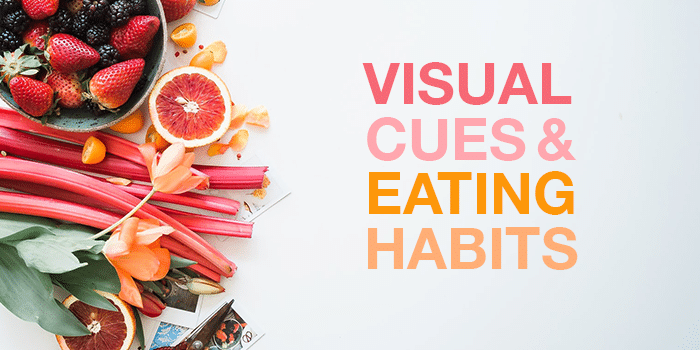 5-star Fitness
5-star Fitness
 5-star Fitness
5-star Fitness

We are all creatures of habit. Our brains are designed to automate our thoughts, feelings, and behaviors in an attempt to make living easier. While this can be a great thing, it can also work against us when it comes to changing unhealthy eating habits that have formed over our lifetime. Often times, we don’t even realize the triggers and cues in our environment that cause our brain to desire eating certain foods.
As an example, this past week I was talking with guests in the dining area prior to dinner. A guest walked past with a light pink cardboard box in her hands. Everyone paused and looked at it with wide eyes, and someone asked what we all were thinking, “Are those donuts?” She shook her head no and chuckled because she said everyone had been asking her that. We all looked at each other and laughed. “My mouth is watering,” someone commented. Isn’t that amazing? Simply the color of a box triggered an entire group of people to think about donuts and desire this sweet treat, causing everyone’s mouths to salivate. Prior to seeing the box, no one was craving donuts. The topic wasn’t on anyone’s mind.
This illustrates how susceptible we are to visual cues in our environment. We are exposed to hundreds of visual cues to eat throughout the day, whether it is the food items in our kitchen, the billboards and storefronts we pass driving, or the advertisements we’re exposed to in the media and online. Our brain reacts to everything it sees, even if you’re not consciously aware of it. It will respond most strongly to those cues that it has positive associations with. For example, if you drive past a McDonald’s every day but have never eaten there before, then your brain will not react strongly because it has no association with that visual cue. However, if you grew up eating McDonald’s weekly with your family and this was a special time together that you enjoyed, then your brain has a positive association to this cue and will respond more strongly when you see it.
So what can you do to combat the effect of visual cues that trigger your eating behaviors and bad habits? First, start by taking inventory of the visual cues that are inside your house and your environment. Remove anything you can that is a trigger to unhealthy eating, such as packaging and magazines. Second, determine if there are any ways that you can avoid food cues altogether. For example, if you always get gas at a station that has your favorite cookies at the counter, can you get gas at a new location? If you usually watch television that has commercials, can you record the program and skip through the ads? Get creative in avoiding exposure to cues, and you’ll find your brain’s desire to eat and crave certain foods will lessen.
Lastly, when you notice that your brain has responded to a visual cue (i.e. mouth-watering, craving for a certain food, mindless eating), you can interrupt the habit loop by pausing and HALTing… ask yourself if you’re Hungry, Angry/Anxious, Lonely or Tired. If you are truly physically hungry, then choose a food or beverage option that provides nourishment and will satisfy your body’s nutritional needs. If you aren’t hungry, then find an alternative action to take instead of eating. If you’re angry, go workout. If you’re anxious, do a meditation. If you’re feeling lonely, call a friend. If you’re tired, take a nap. Or select something else that works better for you! Find a new action that is both satisfying AND moves you towards the direction of your health goals and positive change. With time, you’ll find that you can actually change how your brain responds to visual cues, thereby creating new health habits!